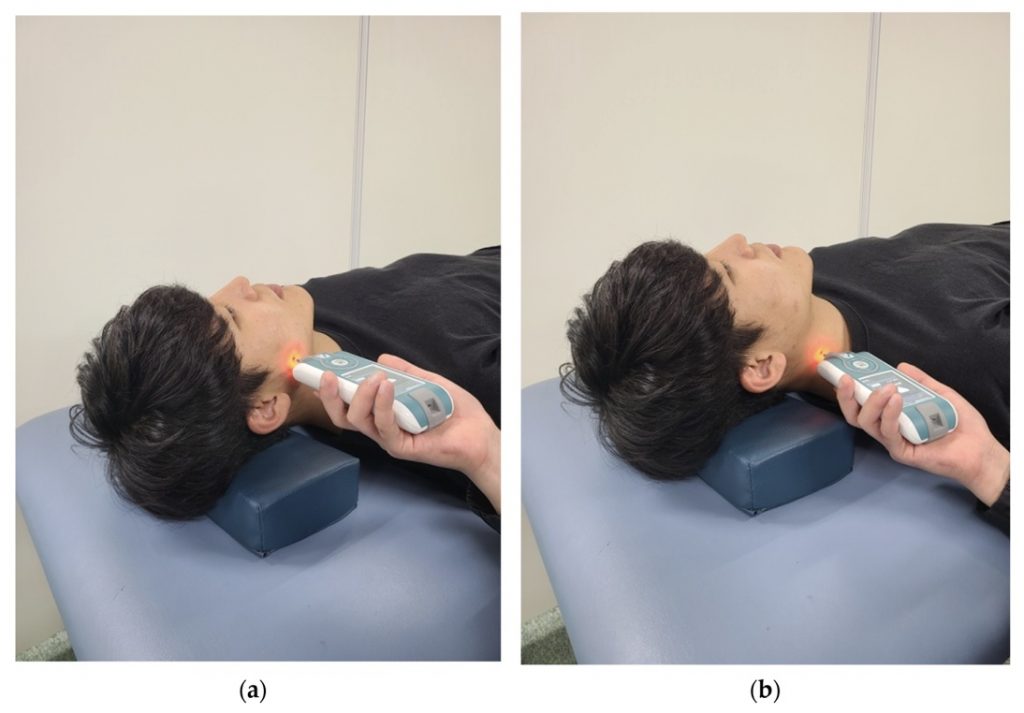Publications

Assessments of Muscle Thickness and Tonicity of the Masseter and Sternocleidomastoid Muscles and Maximum Mouth Opening in Patients with Temporomandibular Disorder
Authors: Keunhyo Lee, Seungchul Chon
Affiliations: Department of Physical Therapy, Graduate School of Medical Science, Konyang University, Daejeon 35365, Korea
Journal: Healthcare - November 2021, Volume 9, Issue 12, Article no. 1640 (DOI: 10.3390/healthcare9121640)
-
Field & Applications:
- Medical
- Musculoskeletal disorder
- Temporomandibular disorder
- Orofacial muscles
The purpose of this study was to compare the muscle thickness and tone of the masseter and sternocleidomastoid (SCM) muscles and maximum mouth opening (MMO) in subjects with and without temporomandibular disorders (TMD), and perform a correlation comparison on the results of the TMD group.
Sixty patients were allocated to the TMD group (n = 30) or the non-TMD group (n = 30). Ultrasound imaging, myotonometer, and vernier calipers were used to determine the related changes in muscle thickness and muscle tone in masseter and SCM, and MMO, respectively.
The TMD group revealed a significant decrease than the non-TMD group in the muscle thickness of masseter and SCM, respectively (p < 0.001), with a significant increase in frequency (p < 0.001) and stiffness (p < 0.001) in the masseter muscle tone, with a significant increase in frequency (p < 0.001) and stiffness (p = 0.005) in the SCM muscle tone, a significant decrease in the MMO (p < 0.001). There was a moderate negative correlation between the relaxed state of masseter muscle thickness and stiffness of SCM muscle tone (r = −0.40, p = 0.002), and a moderate negative correlation between the relaxed state of SCM muscle thickness and frequency of SCM muscle tone (r = −0.42, p = 0.001). There was a moderate negative correlation between the clenching state of SCM muscle thickness and the frequency of SCM muscle tone (r = −0.47, p < 0.001). In addition, a moderate negative correlation between MMO and frequency of SCM muscle tone (r = −0.44, p < 0.001).
The muscle thickness was decreased, and the muscle tone was increased in the masseter and SCM muscle, respectively. Additionally, MMO was decreased in patients with TMD compared with non-TMD.

Figure 3. Muscle tone measurement site: (a) Masseter muscle; (b) SCM Muscle.
Keywords: masseter muscle, maximum mouth opening, muscle thickness, muscle tone, sternocleidomastoid muscle, temporomandibular disorder
This study provides empirical evidence to show that the thickness of the masseter and SCM muscles decreased in the TMD group when compared to the non-TMD group. In addition, the tone of the masseter and SCM muscles increased, and MMO decreased. Finally, there were moderate negative results between the MMO and stiffness of masseter muscle tone. There were moderate negative results between the MMO and frequency of SCM muscles tone. Therefore, when planning exercise programs and treatments for TMD patients, efforts to reduce the tone of the masseter and SCM muscles are expected to help improve jaw opening.


